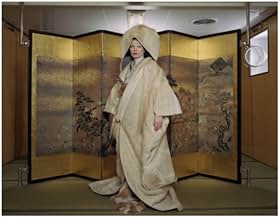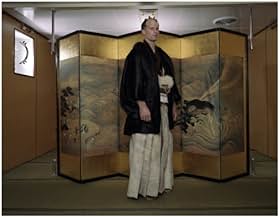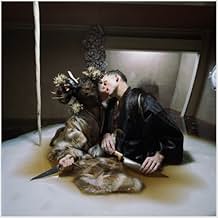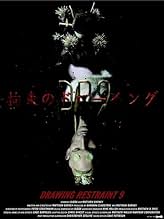IMDb RATING
6.5/10
1.6K
YOUR RATING
The film concerns the theme of self-imposed limitation and continues Matthew Barney's interest in religious rite, this time focusing on Shinto.The film concerns the theme of self-imposed limitation and continues Matthew Barney's interest in religious rite, this time focusing on Shinto.The film concerns the theme of self-imposed limitation and continues Matthew Barney's interest in religious rite, this time focusing on Shinto.
- Awards
- 1 nomination total
- Director
- Writer
- All cast & crew
- Production, box office & more at IMDbPro
Featured reviews
There's no dialogue for a while, and then there's some Japanese dialogue, and all the while, I didn't really know what was going on. I was lost at pretty much all times, but that was to be expected. This had "avant-garde" written all over it, and for being an art piece, I guess it's sporadically interesting. It probably achieves what it sets out to do, but whatever that is feels unclear to me. If you want to dive in, there's probably a lot to chew on, but as to whether it would taste any good, who knows. Probably not. But it's challenging. That's more of an observation rather than something that makes it bad or good. And there's some music here composed by Bjork, though she didn't do all the music it seems. I don't know.
That's my take away. I don't know.
That's my take away. I don't know.
Some of the themes that emerged for me: Minimizing use of natural resources in order to maximize the full capacity of human intelligence.
The role of ritual as a focuser of intent that enables utter, literal transformation.
Profound understanding of other forms of life via literal experience of what they have lived (in this case, using that species' human interaction as an entry point for understanding).
Civilized human society's penchant for consuming nature to benefit materially while suppressing our (well documented) ability to shift shape as a means of enriching our intelligence immeasurably.
I noticed how my mind didn't even question the industrialized hierarchy presented in the film, the ritual of common human toil or even the pageantry that has traditionally accompanied industrial "progress." But I had to struggle with the ritual that became the vehicle of transformation for the two main characters.
What seemed like an unnatural act turned out to be only the human part of what is encountered by the species our hero and heroine sought to be. Their yearning to BE and experience that species seemed very natural.
The role of ritual as a focuser of intent that enables utter, literal transformation.
Profound understanding of other forms of life via literal experience of what they have lived (in this case, using that species' human interaction as an entry point for understanding).
Civilized human society's penchant for consuming nature to benefit materially while suppressing our (well documented) ability to shift shape as a means of enriching our intelligence immeasurably.
I noticed how my mind didn't even question the industrialized hierarchy presented in the film, the ritual of common human toil or even the pageantry that has traditionally accompanied industrial "progress." But I had to struggle with the ritual that became the vehicle of transformation for the two main characters.
What seemed like an unnatural act turned out to be only the human part of what is encountered by the species our hero and heroine sought to be. Their yearning to BE and experience that species seemed very natural.
It you are Japanese or know something about Japanese mythology and/or whaling culture in japan, then this movie will mean a lot more to you than others.
I know most people who watch this movie will come out of the theater ferociously hating Matthew Barney and be turned off of modern art, but for me, this movie was grounded in ancient Japanese traditions. And to have witnessed it, even if it is bastardized from it's Japanese roots, is a fortunate event.
I'll attempt to write the plot as I saw it.
Barney and Bjork were invited onto the whaling vessel as guests. They begin their journey by transforming into sea spirits through several elaborate and beautiful (however long and confusing) ceremonies and rites of passages . This all happens while the whaling crew perform their duties on the symbolic whale. In the end the journey takes a gruesome turn and the transformation is complete.
This is by no means an easy movie to sit through, be forewarned. However, I believe the value is in your furthered exploration into the subject of Japanese culture, ritual and mythology.
Be sure to check out the exhibit at your local museum if it comes to your town. It is absolutely amazing to see.
I know most people who watch this movie will come out of the theater ferociously hating Matthew Barney and be turned off of modern art, but for me, this movie was grounded in ancient Japanese traditions. And to have witnessed it, even if it is bastardized from it's Japanese roots, is a fortunate event.
I'll attempt to write the plot as I saw it.
Barney and Bjork were invited onto the whaling vessel as guests. They begin their journey by transforming into sea spirits through several elaborate and beautiful (however long and confusing) ceremonies and rites of passages . This all happens while the whaling crew perform their duties on the symbolic whale. In the end the journey takes a gruesome turn and the transformation is complete.
This is by no means an easy movie to sit through, be forewarned. However, I believe the value is in your furthered exploration into the subject of Japanese culture, ritual and mythology.
Be sure to check out the exhibit at your local museum if it comes to your town. It is absolutely amazing to see.
I just saw this the other day. I Was in the second row of the cinema so close to all these weird happenings. I knew that it would be slow and hardly without a story. With that in mind I really liked the slow moving pictures, the building of the big Vaseline-sculpture, and the meeting between Björk and Barney(it takes a long time before they actually meet on screen)
I see why some people would find it annoying, but to me it had some stunning visuals and the music was really good.
Just sit back and relax and don't expect much more than two hours of slow moving and weird stuff.
I see why some people would find it annoying, but to me it had some stunning visuals and the music was really good.
Just sit back and relax and don't expect much more than two hours of slow moving and weird stuff.
As with reading all comments, you will find it useful to know where the writer is placed. I have watched the first "Cremaster" and Barney's entry in the "Destricted" compilation. That latter piece was a failure in my mind. There's not much overlap between the sculptural and the cinematic anyway. One is more on the noun side, the other on the verb side: contextual, environmental. I admire that he tried to find that commonality in the erotic, but the result is rather sophomoric in all but the initial choices.
This isn't wonderful either. I hold hope for the later "Cremaster" experiences, that there will be some valuable conversation between us. This is a wholly different thing altogether. This man has found his love, and has created a valentine. Its a conversation, an intercourse between the two of them. The value we are expected to get is in witnessing rather than participating.
The forms he has chosen are all Japanese because they have developed an observational distance with the ordinary things of their life we do not have.
The basic urge here is the melding of the two lives: Bjarney, but with careful, artificial constraints. We have the merging of the tea ceremony with the whaling ritual; the reversal of rendering blubber to whaleoil to the coagulation of pseudoblubber from pseudowhaleoil.
We have the melding of humans with whales, ambergris with pearls, constructing whale icons with consumption...
And of course the conflating of Barney's sculptural objects with Japanese ritualistic ones. I am not well enough versed in details of Japanese esoterica to know where one starts and the other stops, but I suppose in his view it is perfectly balanced, one "restraining" the other; one "drawing" the other, each drawing restraints on another level: tea to whale and so on.
The most engaging sequence is at the beginning: three phenomenal episodes: one the wrapping of two packages, bodies; a second the procession of the whale oil returned and ritual construction thereupon; and finally a dive into the water seeking marine truth, revealing a hot blade (seen later as the humans transform into whales).
Its not for us, they made this. Its a conversation of love and commitment between the two. We've only crew members.
Ted's Evaluation -- 3 of 3: Worth watching.
This isn't wonderful either. I hold hope for the later "Cremaster" experiences, that there will be some valuable conversation between us. This is a wholly different thing altogether. This man has found his love, and has created a valentine. Its a conversation, an intercourse between the two of them. The value we are expected to get is in witnessing rather than participating.
The forms he has chosen are all Japanese because they have developed an observational distance with the ordinary things of their life we do not have.
The basic urge here is the melding of the two lives: Bjarney, but with careful, artificial constraints. We have the merging of the tea ceremony with the whaling ritual; the reversal of rendering blubber to whaleoil to the coagulation of pseudoblubber from pseudowhaleoil.
We have the melding of humans with whales, ambergris with pearls, constructing whale icons with consumption...
And of course the conflating of Barney's sculptural objects with Japanese ritualistic ones. I am not well enough versed in details of Japanese esoterica to know where one starts and the other stops, but I suppose in his view it is perfectly balanced, one "restraining" the other; one "drawing" the other, each drawing restraints on another level: tea to whale and so on.
The most engaging sequence is at the beginning: three phenomenal episodes: one the wrapping of two packages, bodies; a second the procession of the whale oil returned and ritual construction thereupon; and finally a dive into the water seeking marine truth, revealing a hot blade (seen later as the humans transform into whales).
Its not for us, they made this. Its a conversation of love and commitment between the two. We've only crew members.
Ted's Evaluation -- 3 of 3: Worth watching.
Did you know
- SoundtracksGratitude
Written by Björk and Matthew Barney
Vocal by Will Oldham
Harp played by Zeena Parkins
Celeste played by Jónas Sen
Keyboard played by Nico Muhly
Arranging & editing by Björk
Programming by Björk and Valgeir Sigurðsson
Produced by Björk
- How long is Drawing Restraint 9?Powered by Alexa
Details
- Release date
- Countries of origin
- Official site
- Languages
- Also known as
- Растворение мира
- Filming locations
- Production company
- See more company credits at IMDbPro
Box office
- Gross US & Canada
- $234,743
- Opening weekend US & Canada
- $18,011
- Apr 2, 2006
- Gross worldwide
- $267,275
- Runtime2 hours 15 minutes
- Color
- Sound mix
- Aspect ratio
- 1.85 : 1
Contribute to this page
Suggest an edit or add missing content
























